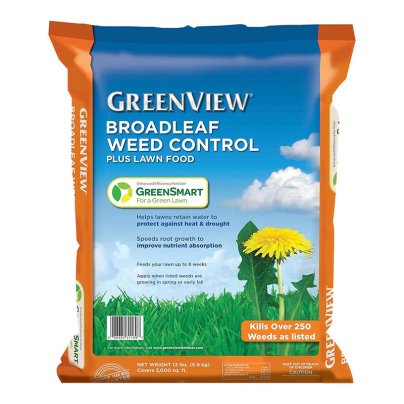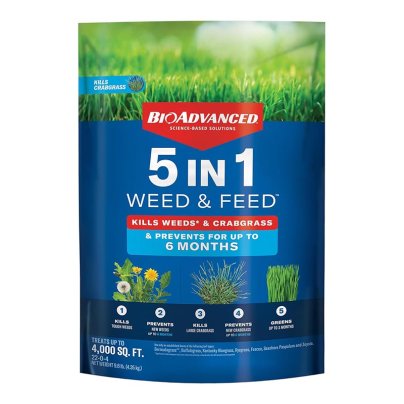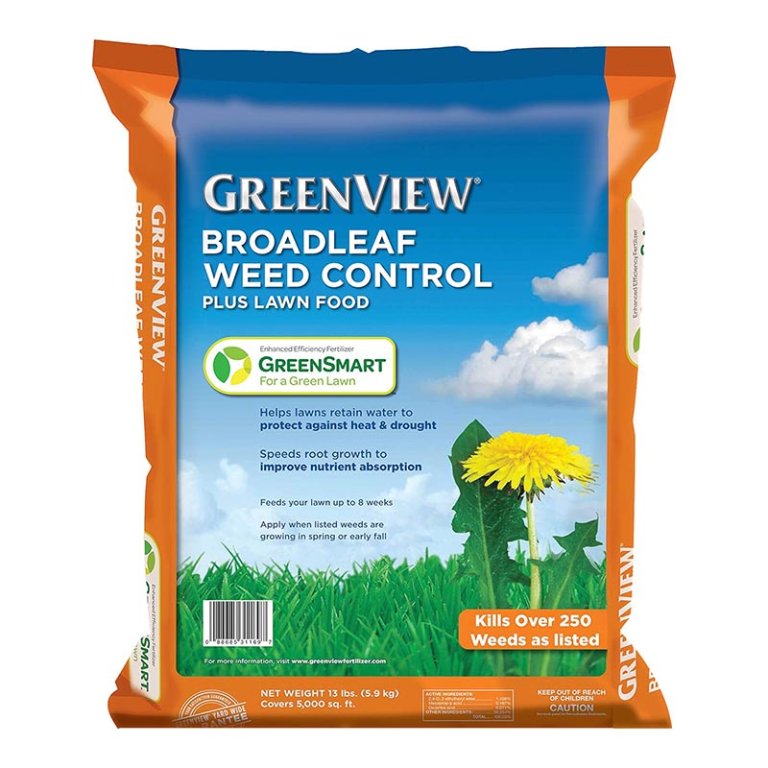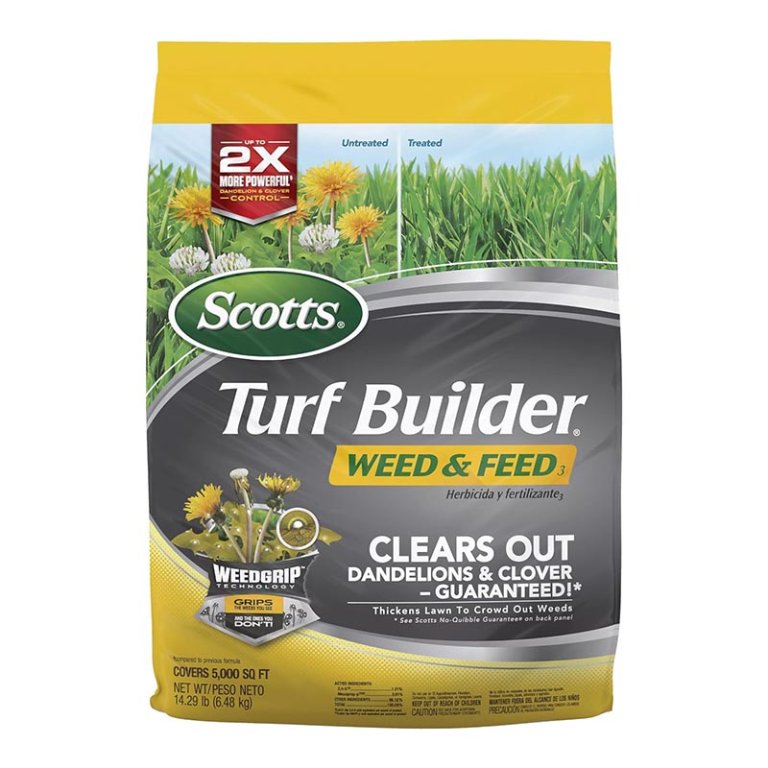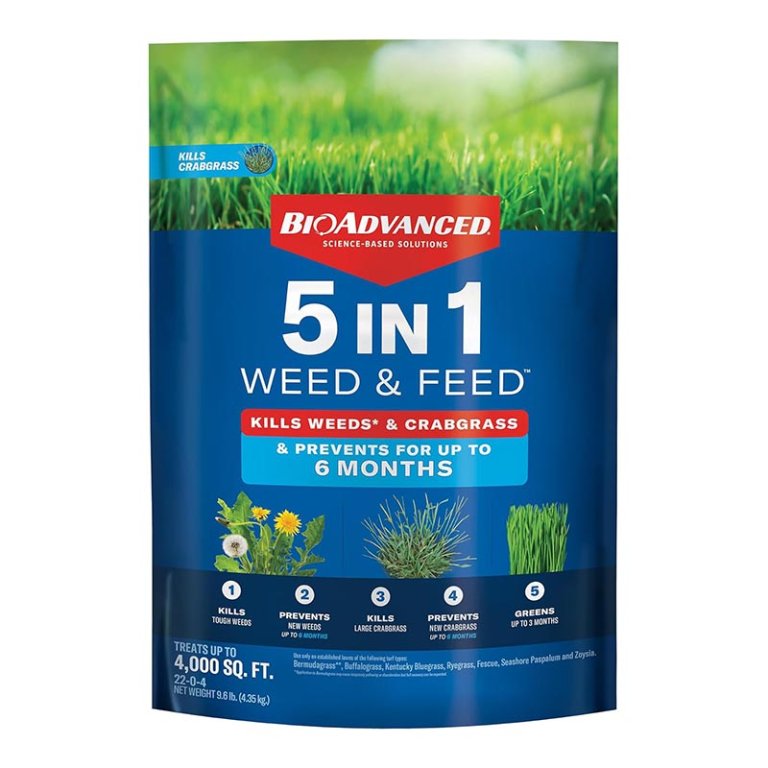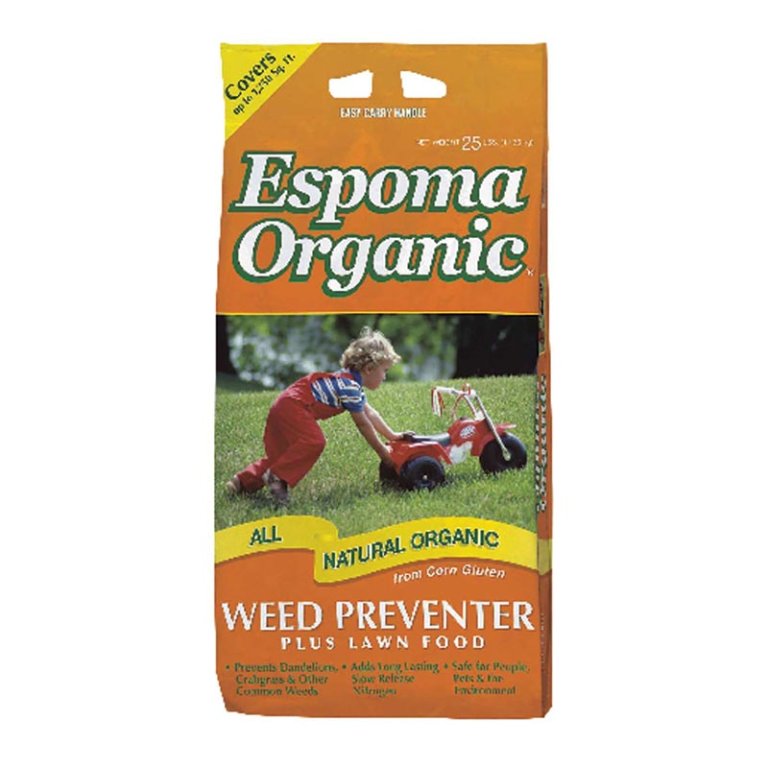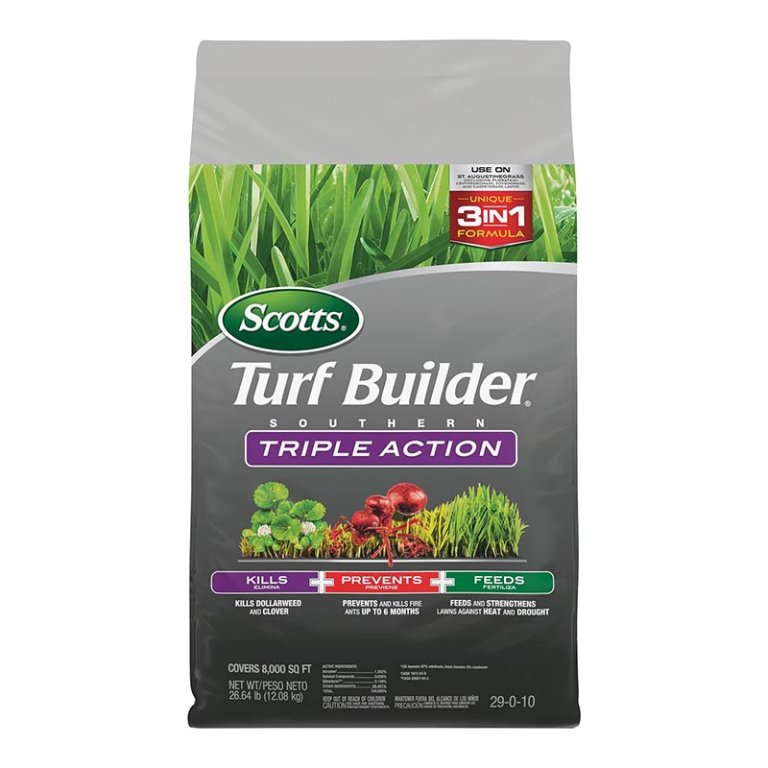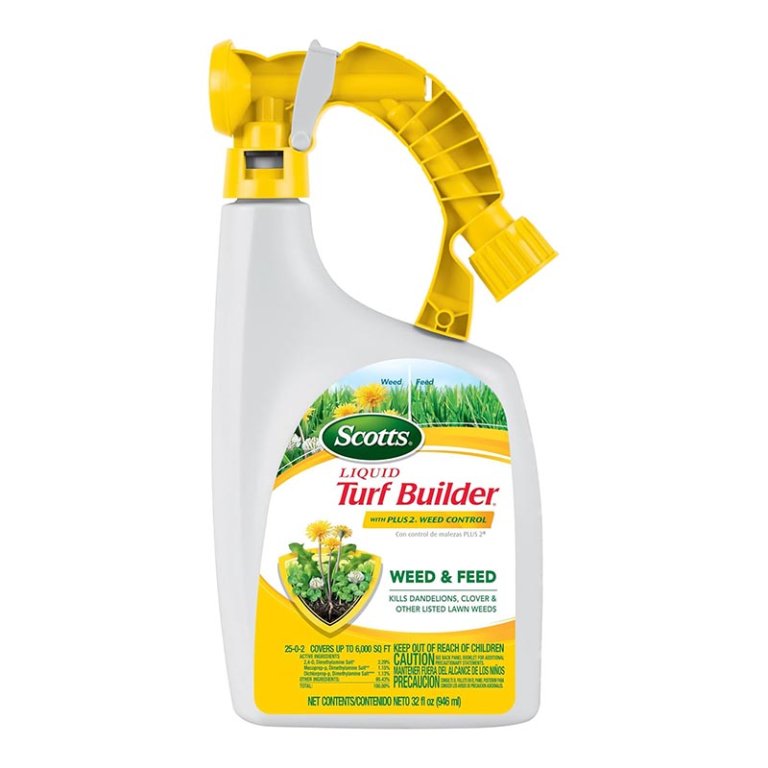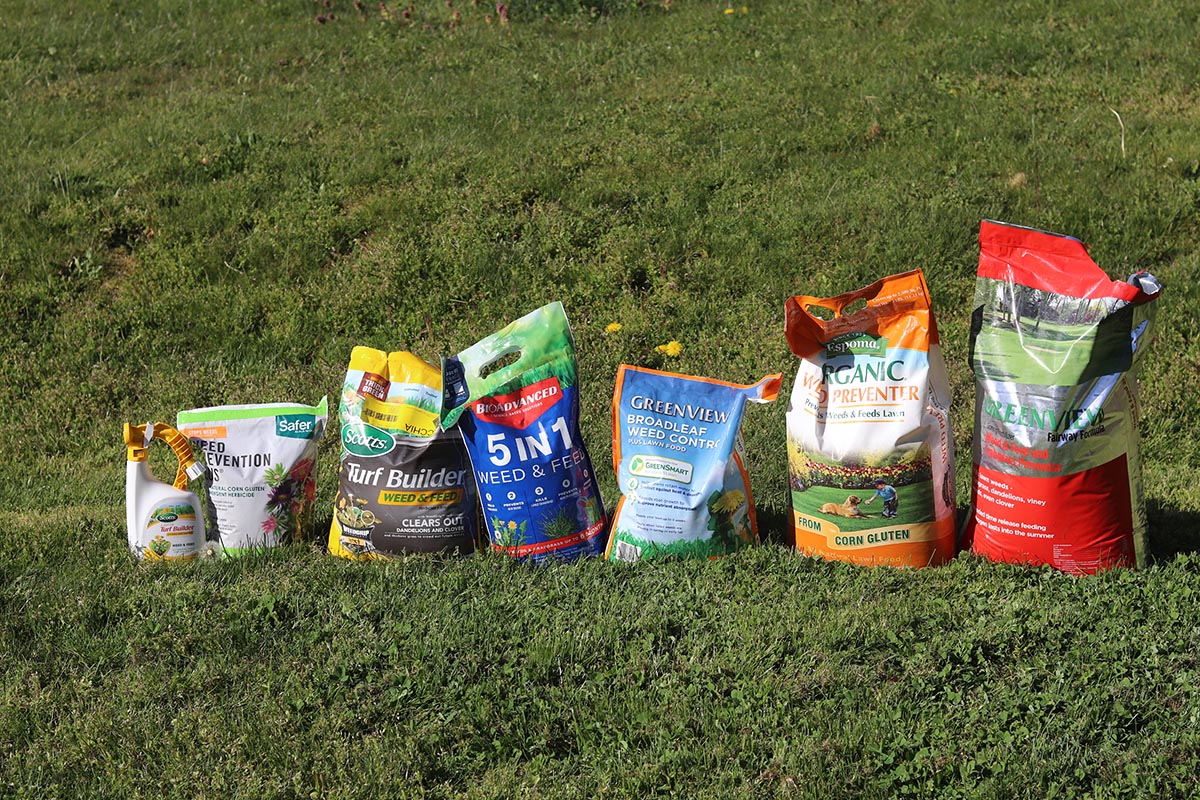
We may earn revenue from the products available on this page and participate in affiliate programs. Learn More ›
A drab, weedy lawn isn’t a lost cause with the help of modern weed and feed fertilizers. Designed to introduce essential nutrients to accelerate the grass’s growth, these products help lawns grow thick and healthy. At the same time, they put the hurt on weeds to choke out the plants you don’t want in favor of the lush carpet of greenery you do. After researching the top fertilizer mixes, we tested eight of the top weed and feeds on a lawn that needed some serious help. These weed and feed products were all tested for at least 4 weeks with varying results and levels of success.
After testing, we can say that our favorite is the GreenView Broadleaf Weed Control Plus Lawn Food. It’s highly concentrated, so it doesn’t take much product to make a big difference. We tested the products in a grid, and the square with this product outgrew (and out-greened) all the others.
The test lawn needed both nutrients and weed reduction, so it gave us the perfect canvas for testing. Keep reading to get a look at how the best weed and feed performed in real-world conditions and what kind of growth (and weed death) you can expect in your own yard.
- BEST OVERALL: GreenView Broadleaf Weed Control Plus Lawn Food
↓ Jump to Review - BEST BANG FOR THE BUCK: Scotts Turf Builder Weed and Feed
↓ Jump to Review - UPGRADE PICK: BioAdvanced 5-in-1 Weed & Feed
↓ Jump to Review - BEST NATURAL: Espoma Organic Weed Preventer
↓ Jump to Review - BEST COOL-SEASON: GreenView Fairway Formula Spring Weed and Feed
↓ Jump to Review - BEST WARM-SEASON: Scotts Turf Builder Southern Triple Action
↓ Jump to Review - BEST LIQUID: Scotts Liquid Turf Builder With Plus 2 Weed Control
↓ Jump to Review
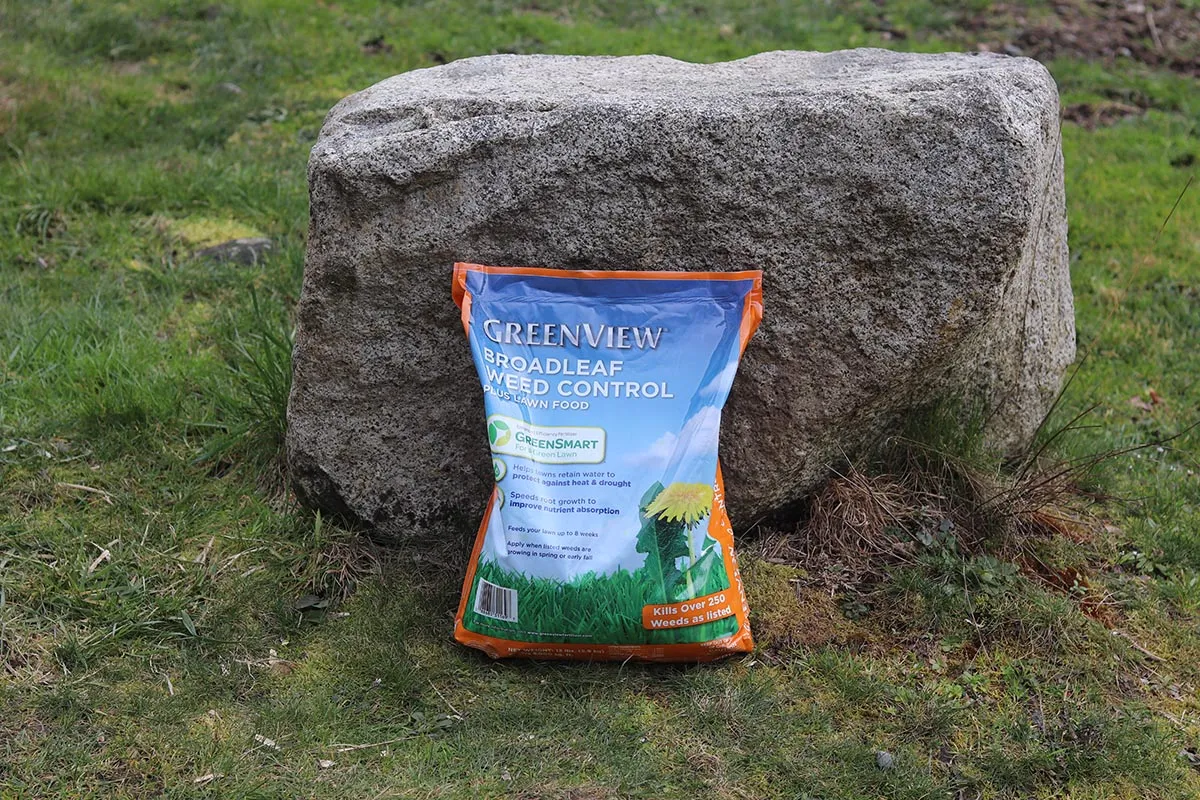
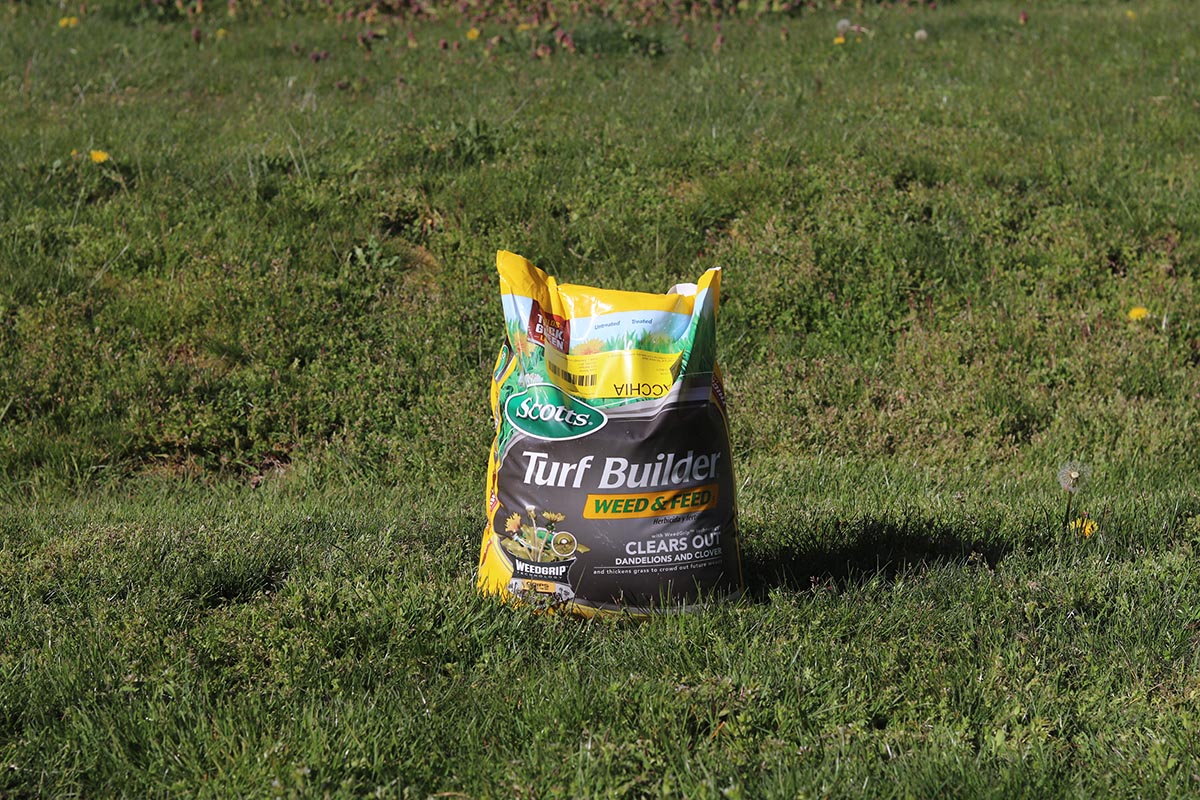
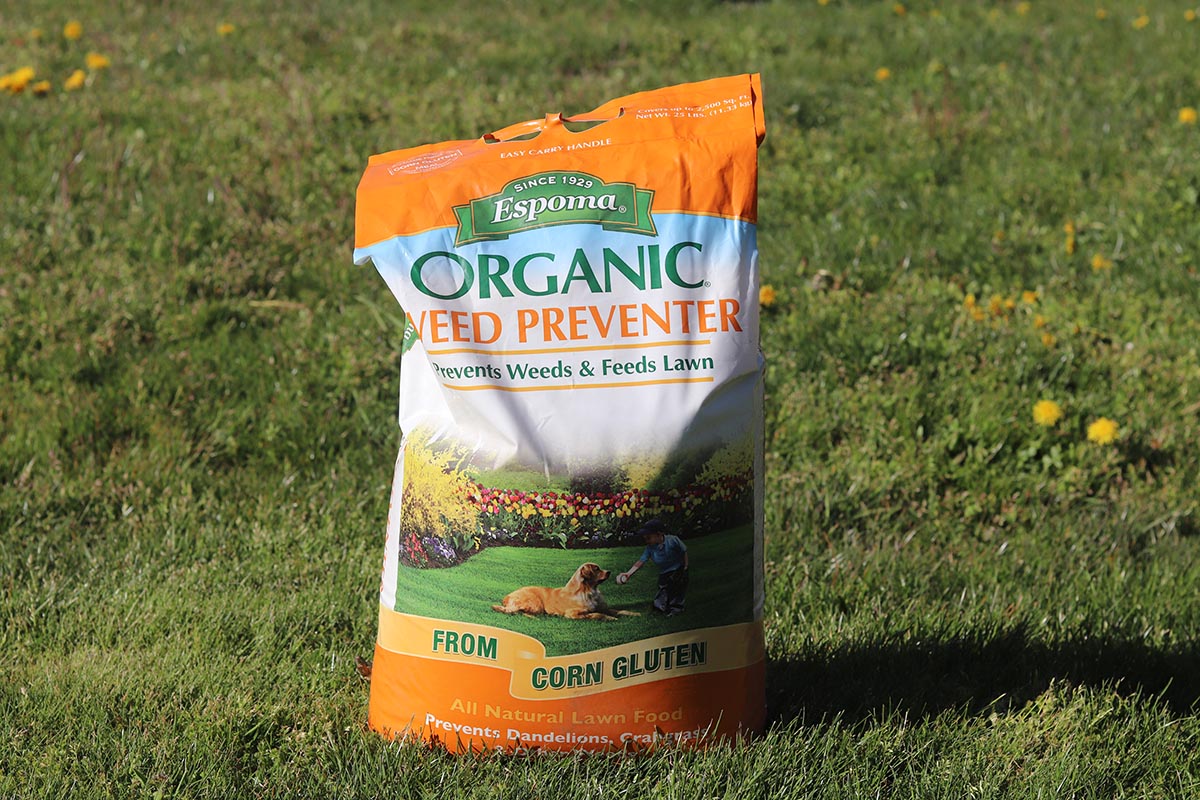
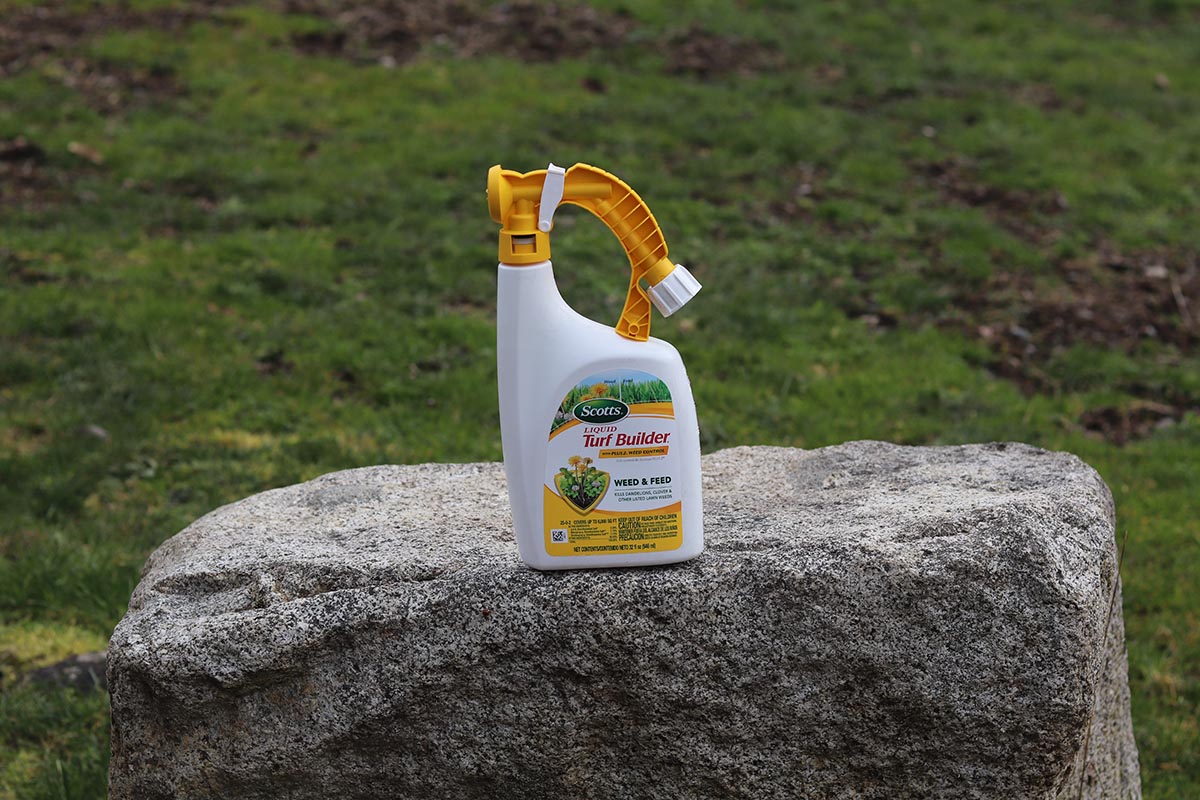
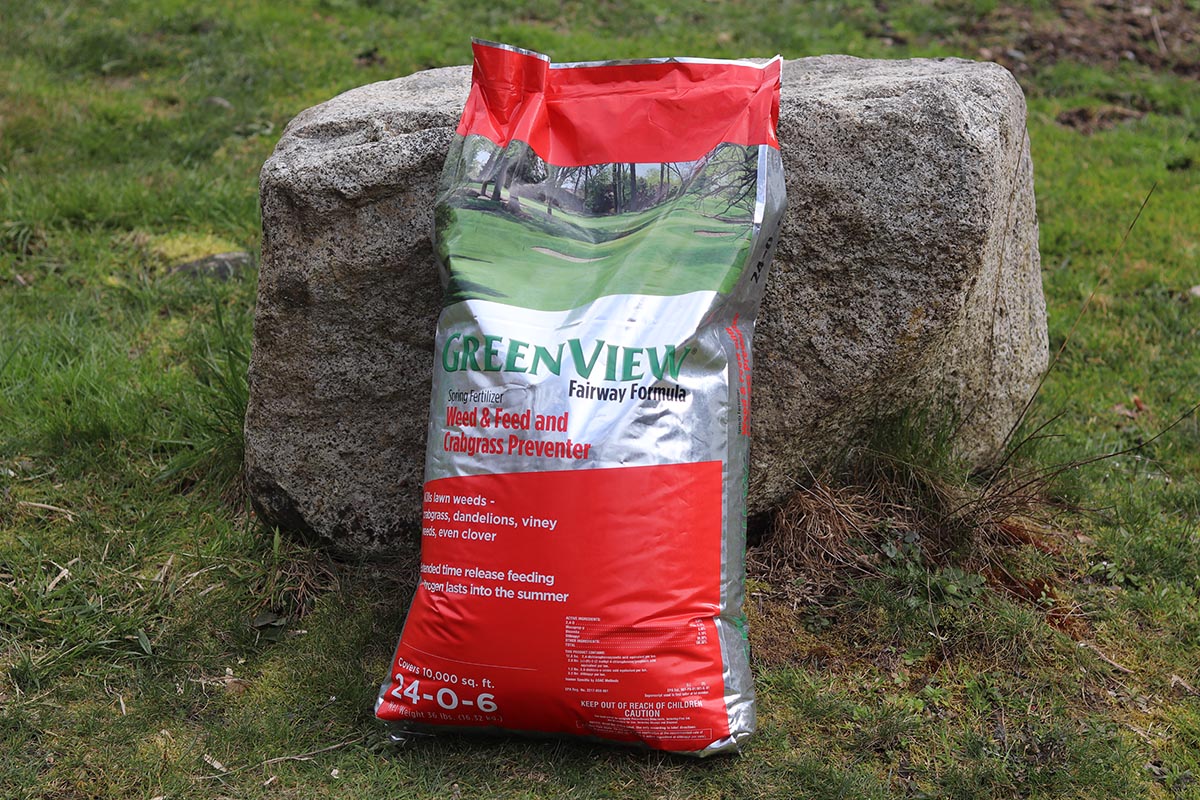
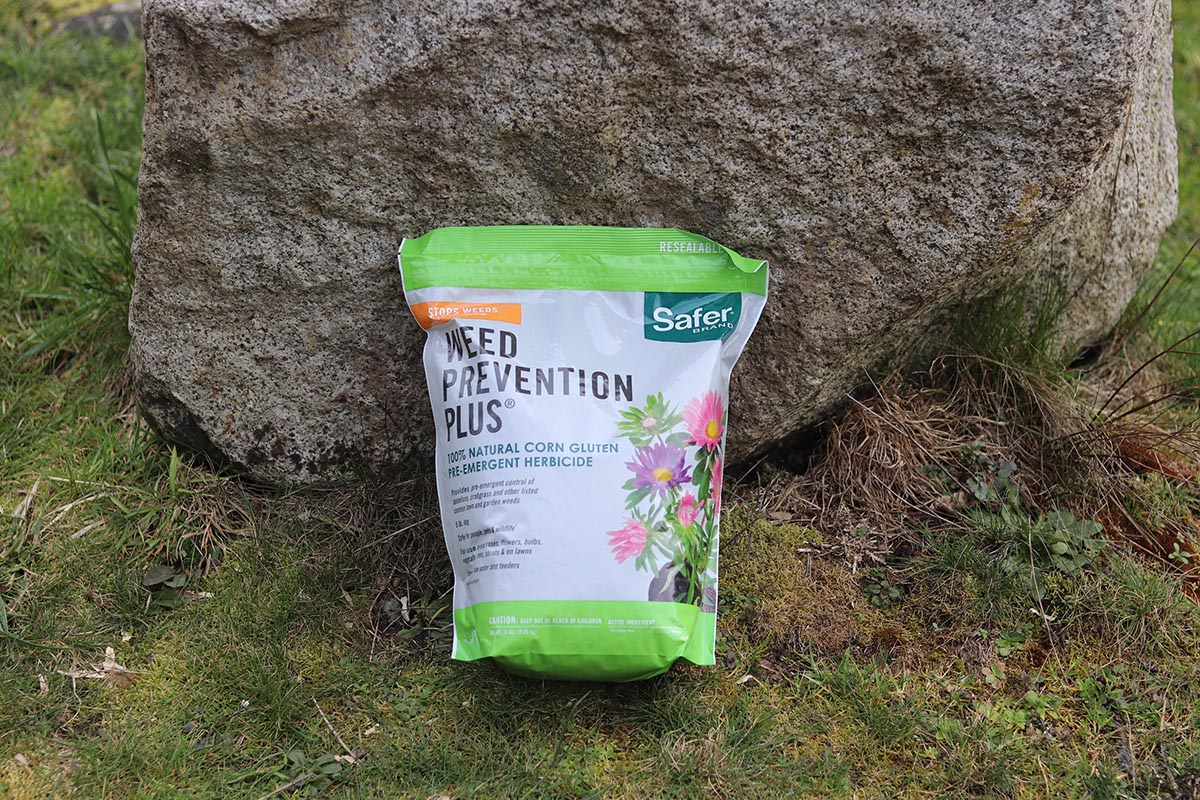
Before You Buy Weed and Feed
Maintaining a healthy lawn includes mowing, weeding, watering, and fertilizing. However, fertilizing isn’t always necessary. Overfertilizing a lawn will make the grass grow more vigorously, requiring more frequent mowing or leading to runoff, which ends up in the local watershed.
Excessive fertilizing can also result in lawn burn, which is when the nitrogen and salt levels in the soil are too high and cause yellow to brown strips or patches of dead grass. A lawn only needs fertilizing if the soil lacks the vital nutrients to help it grow. Home soil test kits can be used to check the soil composition and help you decide what type of fertilizer will best nourish your grass.
Product Comparison
| NPK Ratio | Application | Grass Type | |
| GreenView Broadleaf Weed Control Plus Lawn Food | 27-0-4 | Spring or early fall | Kentucky bluegrass, fine and tall fescues, perennial ryegrass, Bahia, St. Augustine, common Bermuda, hybrid Bermuda, zoysia, centipede, Colonial bent |
| Scotts Turf Builder Weed and Feed | 26-0-2 | Spring | Kentucky bluegrass, fescue, ryegrass, centipede, Bahia, Bermuda, zoysia |
| BioAdvanced 5-in-1 Weed & Feed | 22-0-4 | Spring, early summer, fall | Bermuda, fescue, buffalo grass, seashore paspalum, zoysia |
| Espoma Organic Weed Preventer | 9-0-0 | Spring | All grasses |
| GreenView Fairway Formula Spring Weed and Feed | 24-0-6 | Spring or fall | Kentucky bluegrass, Bermuda, buffalo grass, perennial ryegrass, fine and tall fescues, Bahia, centipede, zoysia, St. Augustine (except for Floratam) |
| Scotts Turf Builder Southern Triple Action | 29-0-10 | Active growth periods | St. Augustine, Floratam, zoysia, centipede, carpet grass |
| Scotts Liquid Turf Builder With Plus 2 Weed Control | 25-0-2 | Spring or fall | Bahia, Bermuda, centipede, zoysia, Kentucky bluegrass, fescue, ryegrass |
Our Top Picks
The following list includes the fertilizers that stood out during research and were then tested to narrow the field to some of the most effective weed and feeds on the market. This list includes both liquid and granular weed treatments.
Best Overall
GreenView Broadleaf Weed Control Plus Lawn Food
What We Like
- Doesn’t require a lot of product to make a difference
- Capable of killing over 250 weed varieties
- Slow-release nitrogen formula
- Made a noticeable difference in grass growth rate and health
What We Don’t Like
- Should not be used on Floratam St. Augustine, Dichondra, and carpet grass
- Contains 2,4-D
Product Specs
- NPK ratio: 27-0-4
- Application: Spring or early fall
- Grass type: Kentucky bluegrass, fine and tall fescues, perennial ryegrass, Bahia, St. Augustine, common Bermuda, hybrid Bermuda, zoysia, centipede, Colonial bent
Our Ratings: Application 5/5; Feed Effectiveness 5/5; Weed Control 2.5/5; Value 5/5
Taking care of a lawn and reducing common weeds is part of property ownership, and for those who want to spruce up lawn health quickly, this GreenView weed and feed mix can do it. This fertilizer and weed killer for lawns is made with a slow-release nitrogen formula that thickens grass, without excessive growth, targeting 250 weed varieties, including dandelions, clover, plantain, dollar weed, and ground ivy. It was the top performer in our testing, creating grass that outgrew the rest. It’s also a great spring or fall weed and feed.
The granules are effective for over 8 weeks and are safe to use on warm- and cool-season grass types, though there are a few varieties to avoid. Plus, the slow release nitrogen is safer to use when temperatures start to rise without burning the grass or causing other lawn injury.
The grass was noticeably taller and greener in the square with this GreenView mix. It’s also a highly concentrated fertilizer and weed preventer, so it doesn’t take a large amount to make a big difference in lawn health. While it didn’t kill existing weeds, fewer weeds grew in the area where this mix was applied. Our only issue with this product is that it contains 2,4-D (as did almost all of the other synthetic products in this test), which has the potential to affect human health and the environment. Make sure to read the application instructions to reduce the potential harmful effects.
Get the GreenView broadleaf weed and feed at Amazon, Lowe’s, Tractor Supply Co., The Home Depot, Walmart (39 pounds), or GreenView.
Best Bang for the Buck
Scotts Turf Builder Weed and Feed
What We Like
- Quick, tangible results for thickening grass and preventing weeds
- Highly concentrated and ample quantity
- Compatible with multiple grass varieties
What We Don’t Like
- Not suitable for warm-season grasses
- Contains 2,4-D
Product Specs
- NPK ratio: 26-0-2
- Application: Spring
- Grass type: Kentucky bluegrass, fescue, ryegrass, centipede, Bahia, Bermuda, zoysia
Our Ratings: Application 5/5; Feed Effectiveness 4.5/5; Weed Control 2.5/5; Value 4/5
Scotts is a well-known brand with an extensive range of lawn care products, including fertilizer and weed and grass killer. This product combines the strongest weed and feed for lawns available from Scotts. It’s supposed to kill common broadleaf weeds like dandelions and clover using WeedGrip technology while feeding the lawn for thicker grass. However, our testing revealed more feed than weed. Granted, the lawn we tested it on has a serious clover and dandelion problem. It’s possible the weed issues were too much even for this powerful weed killer. While we didn’t see a noticeable difference in weed health, they didn’t proliferate.
Scotts Turf Builder is one of the most popular and economical fertilizer and weed control combination products available. Although this weed and feed for Bermuda grass works on many common turf grasses, such as fescue, centipede, Kentucky bluegrass, ryegrass, Bahia, and zoysia, it’s not recommended for some warm-season grasses, such as St. Augustine, Dichondra, or carpet grass. As a synthetic product, it contains 2,4-D, which has the potential to damage human and environmental health.
Get the Scotts Turf Builder weed and feed at Amazon, Lowe’s, or The Home Depot.
Upgrade Pick
BioAdvanced 5-in-1 Weed & Feed
What We Like
- Works on over 200 weed and grassy-weed varieties
- Long-lasting formula feeds for up to 3 months
- Provides nutrients as well as heat and drought resistance
- Requires a minimal amount of mix to make a big difference in lawn health
What We Don’t Like
- Not suitable for new grass
- Contains 2,4-D
Product Specs
- NPK ratio: 22-0-4
- Application: Spring, early summer, fall
- Grass type: Bermuda, fescue, buffalo grass, seashore paspalum, zoysia
Our Ratings: Application 5/5; Feed Effectiveness 5/5; Weed Control 3.5/5; Value 5/5
Taking care of grass while keeping away common weeds and crabgrass can be exhausting and time-consuming. But the BioAdvanced 5-in-1 weed and feed long-lasting formula greens grass and boosts growth so much that users might need to add an extra cutting to their weekly routine. This potent mix can act as a grass killer for crabgrass as well as broadleaf weeds like clover, dandelion, chickweed, and 200 other weed and grassy-weed varieties. It also strengthens established grass by fortifying roots.
With a coverage area of over 4,000 square feet, this weed and feed mix resists the effects of heat and drought and is safe to use on cool-season grass types. It’s also a highly concentrated mix, requiring a minimal amount to be effective.
In testing, it made a big difference in grass growth rate and health, making the grass noticeably brighter and taller. However, it didn’t do much to choke out the clover and weeds, though it showed some ability to prevent new weeds from sprouting. It also contains 2,4-D, a chemical that can potentially harm the environment or people.
Get the BioAdvanced weed and feed at Lowe’s, Walmart, or BioAdvanced.
Best Natural
Espoma Organic Weed Preventer
What We Like
- Made from 100 percent corn gluten meal
- Can be used in any season and is compatible with all lawn types
- Can be used in flower beds or vegetable gardens
What We Don’t Like
- Only covers 1,250 square feet of lawn
- Doesn’t fertilize or control weeds as well as synthetic products
Product Specs
- NPK ratio: 9-0-0
- Application: Spring
- Grass type: All grasses
Our Ratings: Application 5/5; Feed Effectiveness 4/5; Weed Control 2.5/5; Value 3.5/5
Espoma’s Organic Weed Preventer is a natural solution to prevent lawn weeds without harming the environment. This product is made with 100 percent corn gluten meal, which is a byproduct of the corn-milling process that contains a high amount of nitrogen. When applied to your lawn, the nitrogen in the corn gluten meal provides a slow-release fertilizer to nourish the grass and make it more resistant to weeds. Additionally, the corn gluten meal acts as a natural pre-emergent herbicide that inhibits the growth of weed seeds by drying out their roots.
Unlike chemical-based weed preventers, Espoma’s Organic Weed Preventer is safe for pets, children, and the environment. It can safely be used on flower beds and in gardens. During testing, we found that much more of this mix is required to be as effective as synthetic fertilizers. The granules are also more noticeable on the lawn. However, we didn’t have to worry about children or pets walking on that lawn while the granules were still visible. We also appreciated that it can safely be used on flowers and vegetable gardens.
This fertilizer/weed preventer did improve grass color and growth, but it didn’t perform as well as synthetic products. Espoma can help prevent pre-emergent weeds, but not those already growing.
Get the Espoma weed and feed at Ace Hardware or Walmart.
Best Cool-Season
GreenView Fairway Formula Spring Weed and Feed
What We Like
- Kills over 200 varieties of weeds
- Slow-release formula fertilizes for up to 12 weeks
- 36-pound bag treats up to 10,000 square feet of lawn
- Made a noticeable difference in the health and growth rate
What We Don’t Like
- Contains 2,4-D
- Didn’t kill existing weeds
Product Specs
- NPK ratio: 24-0-6
- Application: Spring or fall
- Grass type: Kentucky bluegrass, Bermuda, buffalo grass, perennial ryegrass, fine and tall fescues, Bahia, centipede, zoysia, St. Augustine (except for Floratam)
Our Ratings: Application 5/5; Feed Effectiveness 5/5; Weed Control 2.5/5; Value 4.5/5
GreenView Fairway Formula fertilizes lawns, targets over 200 lawn weed species, and prevents crabgrass from growing. It contains both slow-release and quick-release nutrients that feed a lawn for up to 12 weeks at a time. We like that the slow release reduces the number of times the fertilizer would need to be applied in a year.
Due to the slow-releasing formula, GreenView Fairway Formula is best for use on established lawns with a healthy root system. Using it on new grass may result in burning and stunted growth. It can be used on warm- or cool-season grasses, but check the acceptable grass varieties as there are some exceptions.
This mix noticeably boosted grass health during testing, with the grass growing at a faster rate and being greener than non-treated grass. It comes in a large bag and doesn’t require a lot of granules to be effective, making it an economical option for large lawns. However, we didn’t notice any difference in weed health, either killing them or preventing more from growing.
Get the GreenView Fairway Formula weed and feed at Tractor Supply Co., Ace Hardware (18 pounds), The Home Depot, Walmart, or GreenView.
Best Warm-Season
Scotts Turf Builder Southern Triple Action
What We Like
- Helps lawns withstand heat and drought
- Large coverage area of up to 8,000 square feet
- High-nitrogen formula
What We Don’t Like
- Not safe for people and pets until fully watered in and dry
- Contains Atrazine
Product Specs
- NPK ratio: 29-0-10
- Application: Active growth periods
- Grass type: St. Augustine, Floratam, zoysia, centipede, carpet grass
We understand that warm-season grasses need a weed and feed that can withstand heat and drought conditions while building a thick green lawn. Scotts Turf Builder Southern Triple Action is a 3-in-1 weed and feed made for southern lawns. It’s safe for use on St. Augustine, zoysia, centipede, and carpet grasses, but it’s not recommended for use on Bermuda grass. This product also contains an insecticide that targets fire ants, mole crickets, sod webworms, fleas, armyworms, and more, and it keeps them away for up to 6 months.
Please note that this product wasn’t tested due to the geographic location of the tester.
Get the Scotts Turf Builder Southern weed and feed at Amazon, Tractor Supply Co., The Home Depot, or Walmart.
Best Liquid
Scotts Liquid Turf Builder With Plus 2 Weed Control
What We Like
- Suitable for fertilizing and weeding in any season on any grass type
- Easy to apply
- Affordable
- Noticeably killed weeds after a single application
What We Don’t Like
- Contains 2,4-D
Product Specs
- NPK ratio: 25-0-2
- Application: Spring or fall
- Grass type: Bahia, Bermuda, centipede, zoysia, Kentucky bluegrass, fescue, ryegrass
Our Ratings: Application 4/5; Feed Effectiveness 3/5; Weed Control 2.5/5; Value 1.5/5
Scotts Liquid Turf Builder weed spray lets users easily fertilize a lawn while killing dandelions and clover. One of this product’s best features is the ease of application. All that’s required is for the user to attach the applicator to a garden hose and apply this liquid weed and feed concentrate spray as needed. The process was easy during testing. The bottle has a clear strip so we could see how much we’d applied as we went along. That was helpful, as we applied it to a small area and didn’t want to use the entire bottle.
Scotts weed and feed helps control buckhorn, chickweed, clover, dandelion, ground ivy, henbit, knotweed, and more. Scotts Liquid Turf Builder weed and feed spray can be used with almost any grass type during any season. When used as directed, it won’t burn the lawn and only requires one or two treatments per year. However, for those who don’t notice a change in weeds after one application, it can be applied again within 3 to 4 weeks.
The brand says there should be a noticeable decline in weeds after a few days, but we didn’t notice weeds dying out until 3 weeks into testing. This was one of the few products that killed existing weeds. While it increased grass growth and deepened the green somewhat, it didn’t have the drastic health benefits for the grass as some of the other weed and feeds we tested.
Get the Scotts liquid weed and feed at Amazon, Lowe’s, Ace Hardware, or The Home Depot.
Or, DIY Your Own Weed and Feed
While there are many effective weed and feed products on the market, using commercial weed and feed can be expensive and harmful to the environment. A more natural solution is to make a DIY weed and feed using safe and effective ingredients.
Mix 1 pound of corn gluten meal, 1 cup of Epsom salt, and 1 cup of dried lawn clippings to make your own weed and feed. Corn gluten meal acts as a natural pre-emergent herbicide that prevents weed seeds from germinating, while Epsom salt provides magnesium and sulfur to nourish the grass. Dried lawn clippings act as a slow-release fertilizer that provides nutrients for healthy lawn growth. By using this natural DIY weed and feed, users can maintain a beautiful and healthy lawn without harming the environment.
Jump to Our Top Picks
How We Tested the Best Weed and Feed
| Testing Stats | |
| Products tested: | 7 |
| Hours spent testing: | 8 weeks |
| Tests performed: | 1 |
| Price range: | $20 to $70 |
We created a numbered grid using marking paint and stakes, and one weed and feed fertilizer was applied in each square. The exception was the liquid weed and feed, which required application in a larger area; it was applied to a 100-square-foot area next to the grid.
We calculated how much weed and feed to spread in each square based on the manufacturer’s instructions so that we didn’t over- or under-fertilize. The space was small enough that we spread the fertilizers by hand to prevent them from mixing. We then took pictures upon application and once a week for 4 weeks. Each weed and feed was scored according to a rubric based on how much product it required, how well it performed, and the ingredients. We also considered the eco-friendliness of each fertilizer, looking for nontoxic options and also pet-friendly weed and feed.
| Application | Feed Effectiveness | Weed Control | Value | |
| GreenView Broadleaf Weed Control Plus Lawn Food | 5 | 5 | 2.5 | 5 |
| Scotts Turf Builder Weed and Feed | 5 | 4.5 | 2.5 | 4 |
| BioAdvanced 5-in-1 Weed & Feed | 5 | 5 | 3.5 | 5 |
| Espoma Organic Weed Preventer | 5 | 4 | 2.5 | 3.5 |
| GreenView Fairway Formula Spring Weed and Feed | 5 | 5 | 2.5 | 4.5 |
| Scotts Liquid Turf Builder With Plus 2 Weed Control | 4 | 3 | 2.5 | 1.5 |
What to Consider When Choosing Weed and Feed
Not every weed and feed formula works on every type of grass or in every climate. You need to keep in mind the type of grass, the weed species you want to target, and fertilizer ingredients. Different weed and feeds are also designed for application during different seasons to provide nutrients the grass needs at specific stages of the growth cycle and to better target weeds when they’re at their most vulnerable.
Weed and Feed Type
Weed and feed can be divided into several types. The first is between natural and chemical weed and feeds. Natural weed and feeds may be organic (but not always) and often contain cornmeal as a natural weed preventative and grass fertilizer. These weed and feeds do not contain synthetic chemicals.
Chemical weed and feeds can be further divided into pre- and post-emergent weed and feeds. Pre-emergent weed and feeds contain chemicals that prevent weed seeds from germinating. They do not target already existing weeds. Post-emergent weed and feeds contain chemicals that target existing weeds while fertilizing grass. However, some products (like BioAdvanced 5-in-1 Weed & Feed, our upgrade pick), contain chemicals that affect both pre- and post-emergent weeds.
Grass Type
The best weed and feed product for a lawn depends on the grass type. Grass species have different nutrient requirements, so not all products are safe for every species of grass. Using the wrong weed and feed can stunt growth, burn, or further damage the grass. In general, grass species are divided into two categories: warm season and cool season. The seasons do not refer to the time of year but the climate and average soil temperature range.
- Warm-season turfgrasses grow best with average soil temperatures between 80 and 95 degrees Fahrenheit. Warm-season grasses thrive in the warmer climates of the southeastern and southwestern United States. They include Bahia, Bermuda, carpet grass, St. Augustine, and zoysia (Japanese lawn grass).
- Cool-season turfgrasses grow best with average soil temperatures between 60 and 75 degrees Fahrenheit. Cool-season grasses thrive in the cooler climates of the Midwest and northern regions of the United States. Some cool-season grasses are Kentucky bluegrass, perennial ryegrass, and tall and hard fescue.
Selecting a weed and feed that’s compatible with the grass species will provide far better results.
NPK Ratio
To grow a lush lawn, your soil needs to have essential nutrients. Fertilizers temporarily add nutrients to the soil. Fertilizers typically list their nutrient ratios as an NPK formula. This denotation represents the percentage of nitrogen (N), phosphorus (P), and potassium (K) in the product.
- Nitrogen (N) helps the grass grow properly and develop a green color.
- Phosphorus (P) helps develop strong root systems.
- Potassium (K) protects plants from disease, drought, and cold.
There are at least 11 states that ban phosphorus fertilizer use or sale. Luckily, many lawn weed and feed manufacturers have adapted to this and removed phosphorus from their products. Don’t worry—the weed and feed will still green and thicken the grass without the additional phosphorus.
Fertilizers can also contain secondary elements and micronutrients needed for healthy growth, such as sulfur, calcium, magnesium, boron, iron, molybdenum, zinc, copper, chloride, nickel, and manganese. To find out exactly what nutrients the lawn needs, conduct a soil test. Either purchase a test for home use or take a soil sample to the local cooperative extension testing office.
Natural vs. Synthetic
There are distinct differences between natural and synthetic weed and feeds.
Natural and organic weed and feed products contain plant-based or mineral ingredients that are safe for the environment and human health. They nourish the soil and plants to make them more resistant to weeds and prevent weed seed germination.
At this time, natural alternatives aren’t as effective as their synthetic counterparts. However, some users of natural weed and feeds report that they notice healthier grass and fewer weeds after using the products for several seasons. In short, it takes patience and consistency to see gradually improved lawn health. It also takes more of the product to fertilize, which increases the overall cost, but it’s often worthwhile for the long-term health of people and the environment.
On the other hand, chemical-based products contain synthetic herbicides that quickly kill weeds and improve grass health. However, they may contain ingredients that hurt beneficial plants, insects, and wildlife. Two of the most commonly used herbicides, 2,4-D and Atrazine, have been linked to numerous health and environmental problems. 2,4-D is a hormone-disrupting chemical that can potentially cause cancer, congenital disabilities, and developmental issues in children. Atrazine is a highly toxic herbicide that can contaminate drinking water, cause congenital disabilities, and harm wildlife.
Be careful when applying these products in areas with a shallow water table, as they have the potential to contaminate the water supply. Always follow the manufacturer’s instructions, and keep children and pets off the lawn until the product has dried or worked its way into the grass/soil.
Application
Weed and feed comes in two forms: liquid and granular. Liquid forms are simple to apply and kill weeds faster than the more economical, though slower-acting, granular forms. Weed killer spray or liquid weed and feed is designed for small yards. Granular weed and feed covers more area, often 5,000 square feet or more, and is often available in 18-pound bags and larger. Granular versions offer a better value, but users do need to water their lawns after application for the product to penetrate the grass.
FAQs
If you want a pet-safe weed and feed or are curious to know what type is best for killing stubborn weeds, read on for answers to these and other commonly asked questions.
Depending upon the brand, it may take from 5 days to up to 2 weeks to see the visible results of weed and feed. However, natural and organic products may take longer to produce visible results.
As with most gardening or fertilizing tasks, it is best to apply weed and feed in the spring. This is when weeds are actively beginning to grow, which allows the weed and feed to kill the weeds as seedlings. However, some brands do not recommend that the weed and feed become wet after application, so apply the weed and feed before rain—in some cases, at least 24 hours before any forecasts of rain.
Read the manufacturer’s instructions. Some weed and feed products should be applied a day or two after mowing, while others should not. The application time varies by product and sometimes by the season in which the product is used.
Weed and feed is a combination of fertilizer and various weed killers, so these products are not bad for your lawn.
If used properly, pet-friendly weed and feed and many standard weed and feeds are generally safe to use on lawns and spaces where dogs (and even children) are actively playing. However, always follow the package instructions because some herbicides can be moderately toxic to dogs.
Meet the Tester
Stacey L. Nash has written about home and garden products, home design and decor, and general indoor and outdoor home improvement for 5+ years. She’s passionate about research and hands-on testing to find the products that add true value to homeownership and daily life. She lives on 12 heavily wooded acres, where she and her family put home and outdoor products to the test while avoiding bears and cougars.
Additional research provided by Debbie Wolfe.
